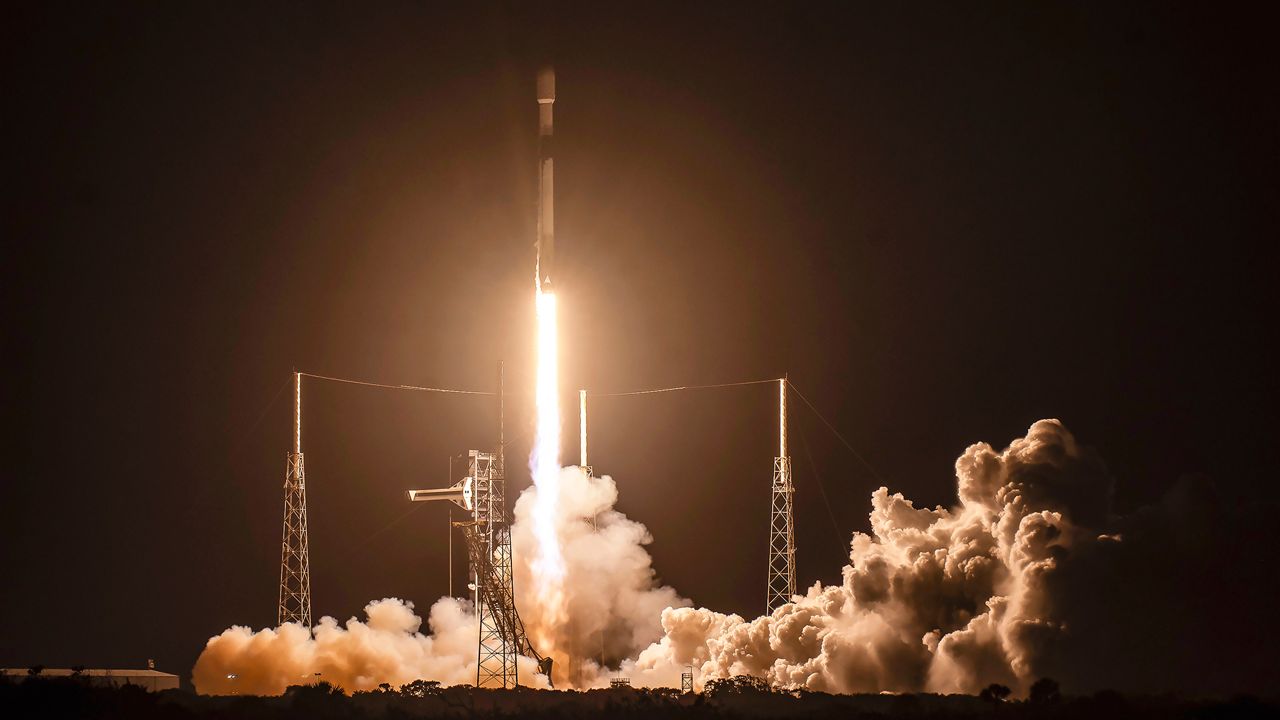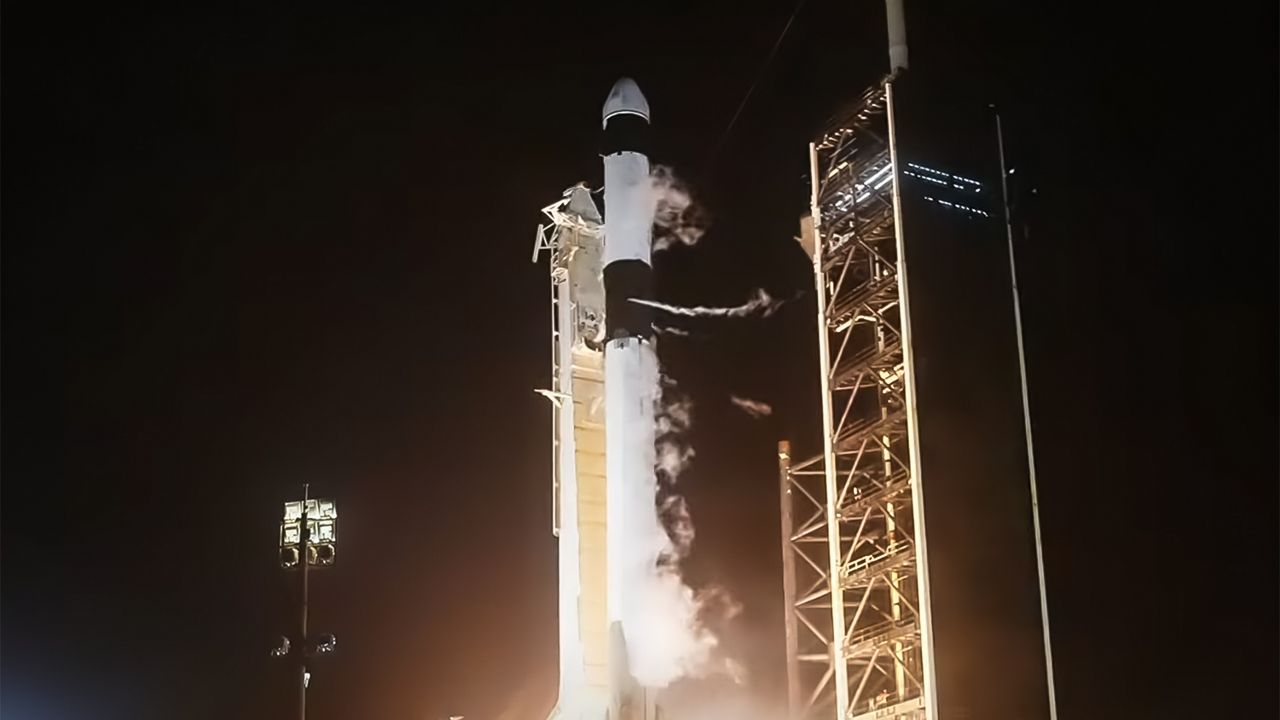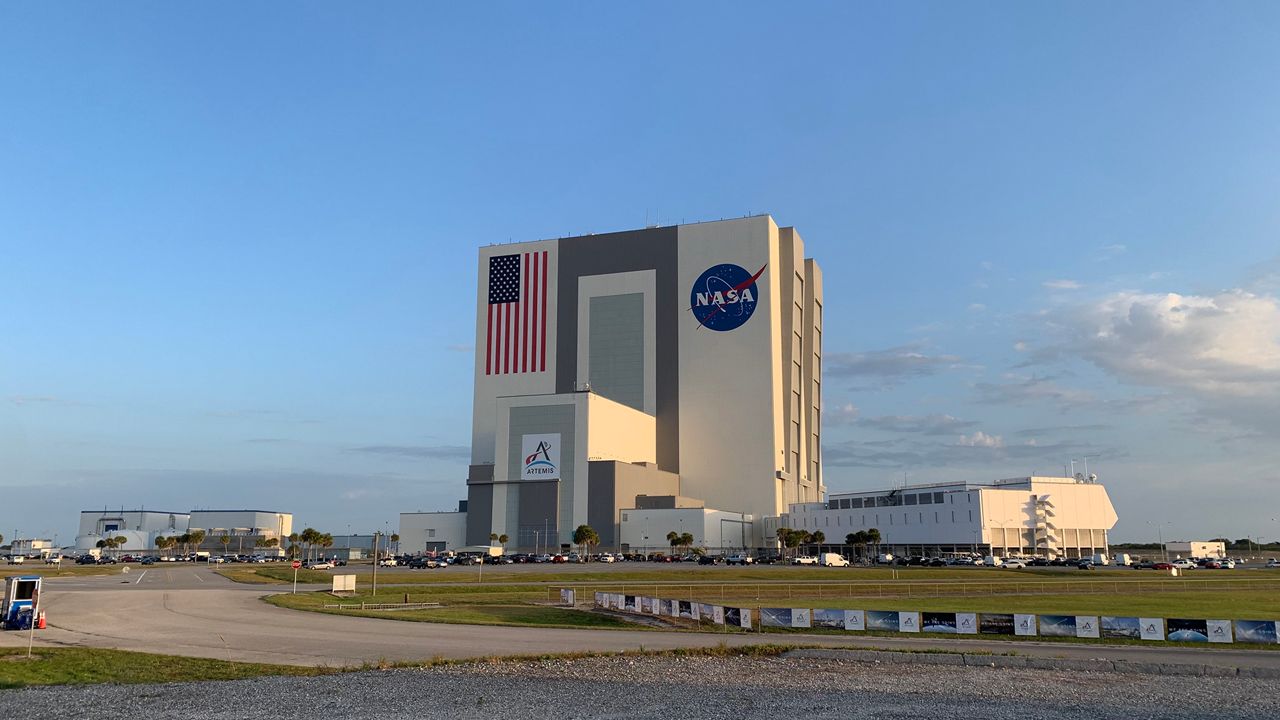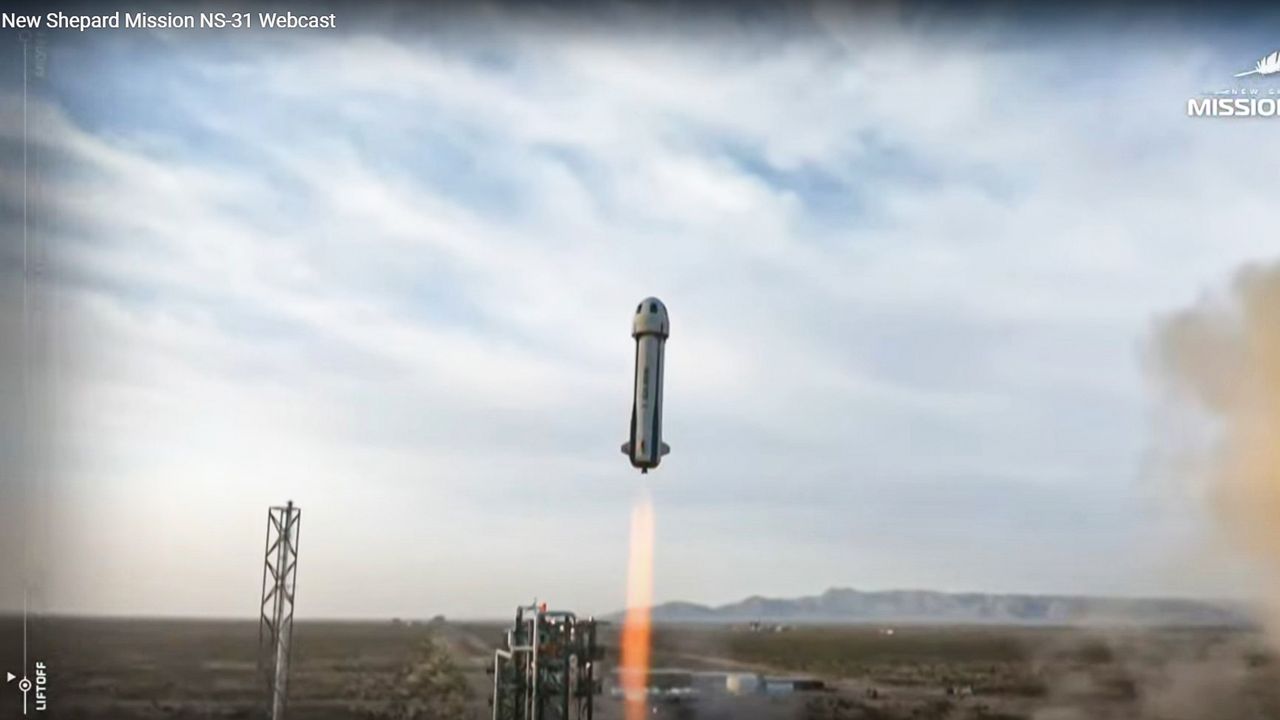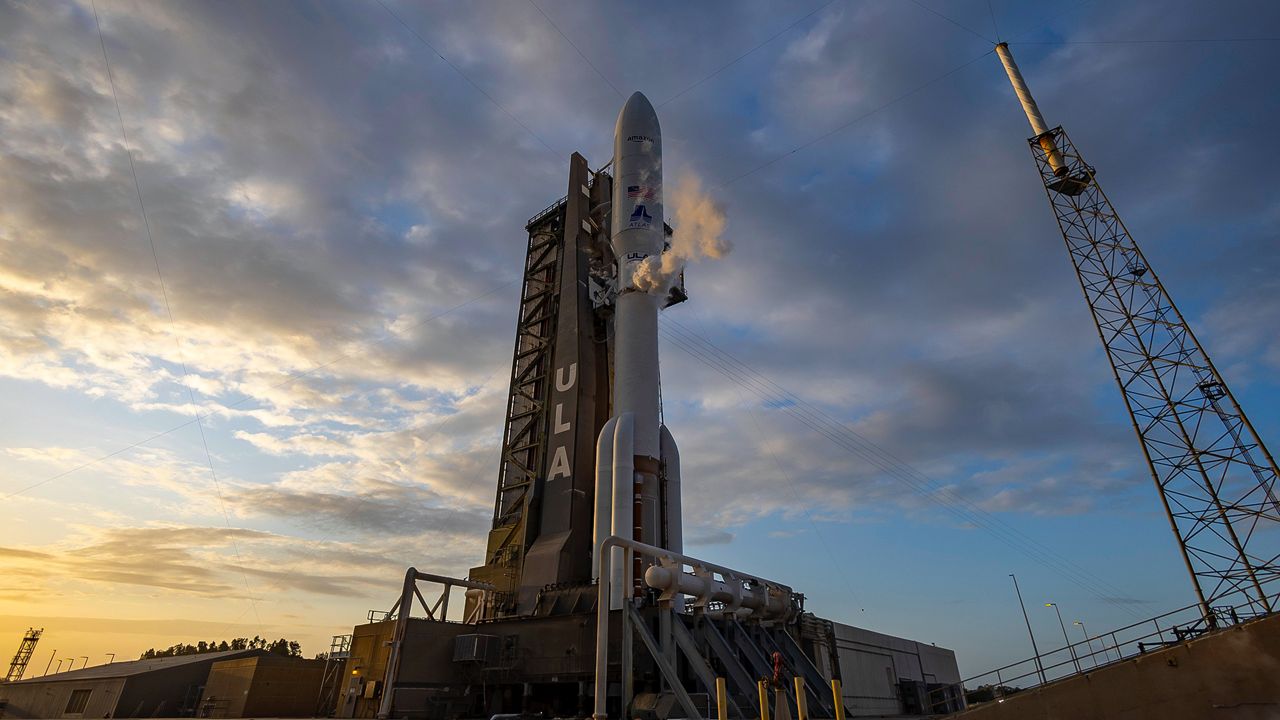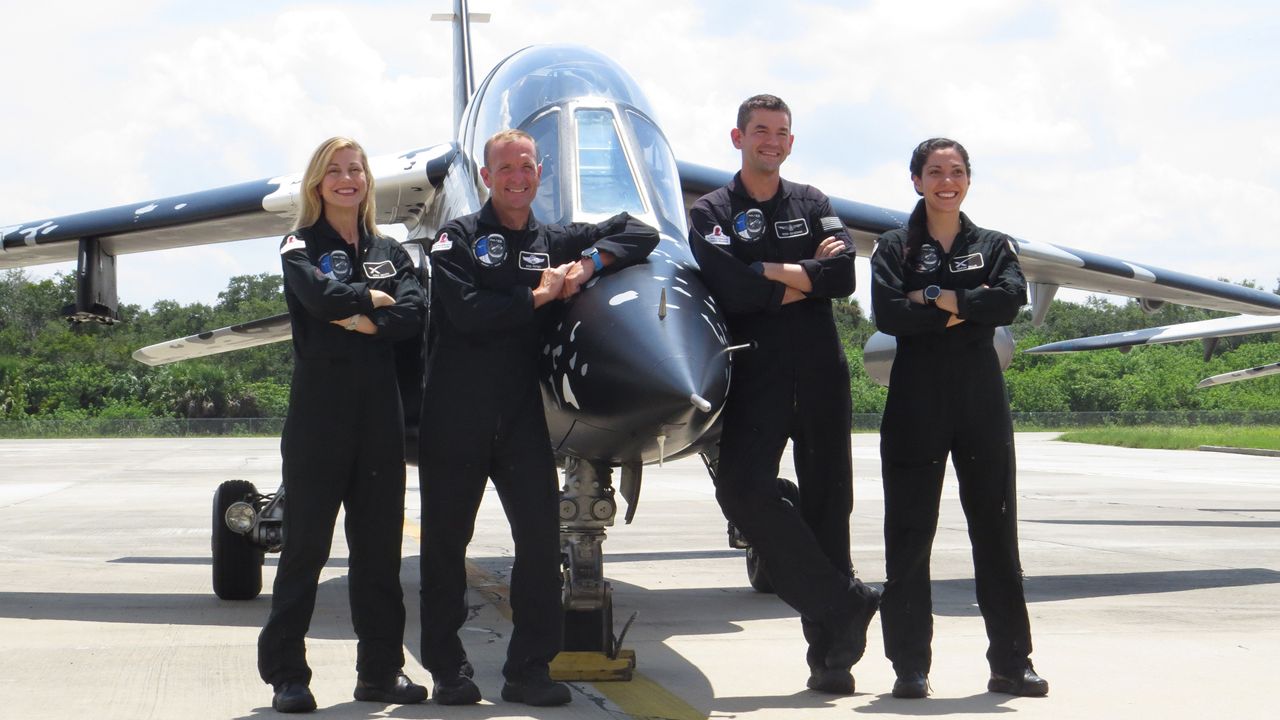KENNEDY SPACE CENTER — SpaceX successfully launched nearly 6,000 pounds of supplies, food and experiments to the International Space Station on Monday night.
What You Need To Know
- Almost 6,000 pounds of supplies, food and experiments will be sent up
- Falcon 9 rocket is set to leave Launch Complex 39A at the Kennedy Space Center
The California-based company’s Falcon 9 rocket had an instantaneous liftoff at 9:29 p.m. ET from Launch Complex 39A at the Kennedy Space Center.
Since the cargo Dragon space capsule is going to the International Space Station, the timing had to be just right to leave the launch pad to meet up with the ISS.
The 45th Weather Squadron gave a 70% chance of good liftoff conditions, with the only things to watch out for were the cumulus cloud rule, liftoff winds and flight through precipitation.
Find out more about the weather criteria for a Falcon 9 launch.
Going up into the black
The Falcon 9’s first-stage booster, B1083, has an impressive record of launches, with two of them crewed ones.
After the stage separation, B1083 landed on Landing Zone 1 at Cape Canaveral Space Force Station.
SpaceX’s fleet of Dragon space capsules have conducted 31 resupply missions for NASA. The cargo Dragon for this mission, C208, has done four:
- CRS-21
- CRS-23
- CRS-25
- CRS-28
About the mission
This mission, 31st Commercial Resupply Services (CRS-31), will see a wide-array of items being sent up, according to NASA.
Once this Dragon autonomously docks with the space station’s Harmony module, the seven astronauts and cosmonauts will be digging through almost 6,000 pounds of experiments, supplies and food.
And those experiments will keep the Expedition 72 quite busy. An expedition is the current crew onboard the International Space Station.
“In addition to food, supplies, and equipment for the crew, Dragon will deliver several new experiments, including the Coronal Diagnostic Experiment, to examine solar wind and how it forms. Dragon also delivers Antarctic moss to observe the combined effects of cosmic radiation and microgravity on plants. Other investigations aboard include a device to test cold welding of metals in microgravity, and an investigation that studies how space impacts different materials,” described NASA.
This Dragon will not be staying on the ISS for long, as it will undock in December for a splashdown off the coast of Florida. The details of that undocking and splashdown have not been released.







